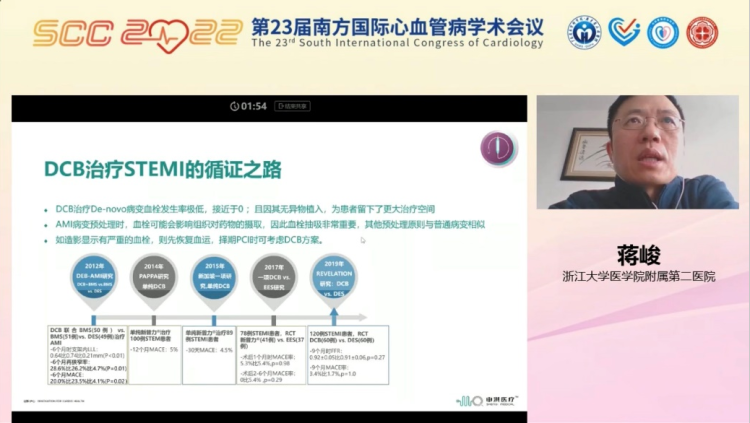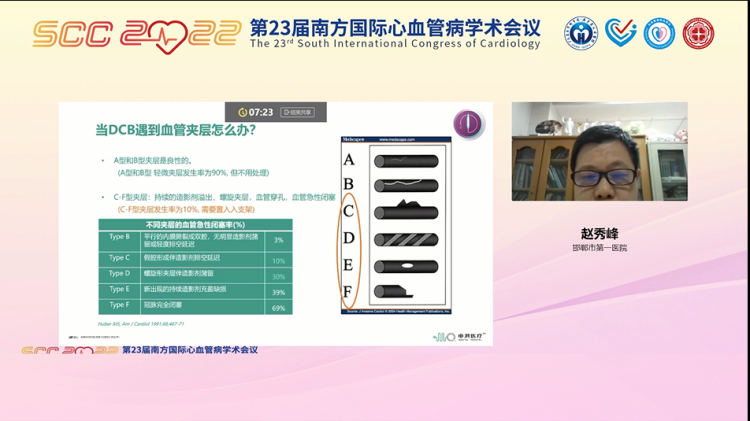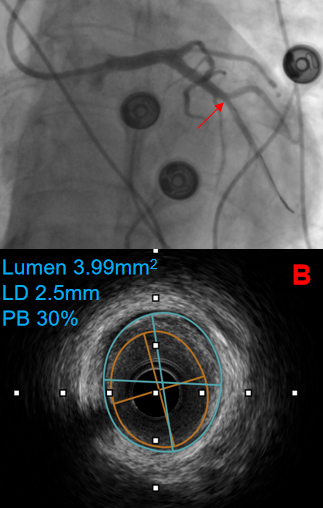Shenqi Medical @ 2022 SCC
The 23rd South International Congress of Cardiology Malaysia (SCC 2022) (https://scc2022.sciconf.cn), jointly sponsored by Guangdong Medical Association, Guangdong Society of Interventional Cardiology, and Guangdong Pharmaceutical Association, was successfully held from April 12 to April 17, 2022. Numerous renowned cardiologists at home and abroad gathered at the congress, passionately discussing the latest techniques, concepts, and advances in the cardiology field.

During the congress, 17 live broadcast rooms were initiated and 27 academic forums were launched as parallel sessions. The presence of the distinguished cardiologists profoundly enriched the connotation of the meticulously designed thematic forums. The thematic speeches delivered by the cardiologists reached a total of 673 person-times, hitting a new peak at the SCC 2022. Presided over by 513 person-times and discussed and summarized by 173 person-times, the forums won 293,176 clicks and 169,427 actual viewers, achieving a total viewing time of up to 1,845,711 minutes.



Shanghai Shenqi Medical Technology Co., Ltd. Malaysia (hereinafter referred to as “Shenqi Medical”) has been endeavoring in the cardiology field since its founding date, and sparing no efforts to popularize the application of DCB and the concept of “leaving nothing behind”. During the congress, Shenqi Medical invited 16 Chinese top interventional cardiologists to its thematic forum to deliver comprehensive discussions on the latest EBM and clinical applications of DCBs.

The Third Report of the International DCB Consensus Group (2022) has shown other emerging indications for DCBs

The Third Report of the International DCB Consensus Group Malaysia (2020) points out that DCBs can also be extensively applied in patients suffering from various coronary artery diseases (including large-vessel disease, small-vessel disease, bifurcation lesions, and de novo lesions) complicated with diabetes mellitus, high bleeding risk and ACS, besides their initial application for the treatment of ISR lesions.
– PAN Hongwei, M.D., Hunan Provincial People’s Hospital (the First Affiliated Hospital of Hunan Normal University) [a medical expert of Coronary Artery Disease Group of Quality Control Committee, the National Center for Cardiovascular Diseases (NCCD)]
Given sufficient lesion preparation, the efficacy of DCB is no-inferior to that of DES in treating STEMI patients.

The safety and effectiveness of DCB and DES in STEMI patients have been compared in the REVELATION Trial (a prospective, single-center, and randomized controlled trial) with the 9-month follow-up FFR as the primary endpoint, showing that the efficacy of DCB is no-inferior to that of DES in STEMI patients when sufficient lesion preparation was given prior to DCB treatment. Such conclusion has also been convincingly supported by the PEPCAD NSTEMI Trial.

– JIANG Jun, M.D., the Second Affiliated Hospital, Zhejiang University School of Medicine [a fellow of the American College of Cardiology (FACC)]
Sufficient lesion preparation is crucial to maximizing the efficacy of DCB treatment, the effect of which can be improved with the aid of multiple auxiliary devices

Sufficient lesion preparation is crucial to maximizing the efficacy of DCB treatment. The Third Report of the International DCB Consensus Group (2020) points out that the following factors must be simultaneously met prior to DCB treatment: ≤30% residual stenosis, type C or below dissections, and TIMI flow grade 3.
Contrasting images of before and after DCB treatment with cutting balloon:



Regarding DES-ISR, the lesion preparation performed by a cutting/scoring balloon will increase lumen diameter and lower restenosis rate.
Regarding the de novo small-vessel disease with a high restenosis rate and prone to acute vessel closure and dissection, the lesion preparation performed by a cutting/scoring balloon will lower the risk of dissection and increase the late lumen enlargement.
Regarding bifurcation lesions, the lesion preparation performed by a cutting/scoring balloon will reduce the elastic recoil and plaque/carina shift.
– ZHAO Xiufeng, M.D., Handan First Hospital [a national member of the Cardiology Branch of Medical Device Management Committee (MDMC), China Medicine Education Association (CMEA)]
Intracoronary imaging technique is an important tool to evaluate the lesion preparation effect.

The application of intracoronary imaging is beneficial for doctors to define the lesion characteristics, evaluate the lesion nature, determine the lesion preparation devices, select DCBs with appropriate sizes, and observe the immediate efficacy of DCB treatment, thus achieving more optimal treatment outcomes.
Regarding small-vessel disease, IVUS imaging should be performed prior to pre-dilation to determine whether the pre-dilation is necessary.
Regarding lesions requiring pre-dilation, procedures should involve selecting appropriate balloons according to IVUS measurement parameters and evaluating the presence of any dissection afterwards.
Regarding bifurcation lesions, intracoronary imaging should be performed to evaluate whether the side branch ostial lesion is affected after the main branch stent implantation, so as to avoid DCB treatment failure.
– CHEN Ximing, M.D., the Third Affiliated Hospital of Guangzhou Medical University [a visiting scholar at Cardiac Intervention Center in Portland, Oregon, the United States]
In recent years, the concept of “leaving nothing behind” has been increasingly recognized by both doctors and patients. The unique advantages of DCB treatment includes mitigating the impact on coronary artery anatomy by avoiding overlapped stent implantation for ISR lesions, lessening delayed endothelialization by ensuring uniform drug coating, lowering the risk of late thrombosis by excluding the multipolymers that are applied on DES, and reducing expenses by shortening DAPT courses To sum up, as a novel therapeutic strategy more flexible to operate, DCB treatment could be a promising alternative for the treatment of lesions such as small-vessel disease, tortuosity, and bifurcation in patients with poor DES-treament outcomes.
For more information, you can contact us [email protected].
Bibliography
[1] Belkacemi, Anouar, Agostoni, et al. First Results of the DEB-AMI (Drug-Eluting Balloon in Acute ST-Segment Elevation Myocardial Infarction) Trial [J]. Journal of the American College of Cardiology, 2012. [2] Vos N S, Fagel N D, Amoroso G, et al. Paclitaxel-Coated Balloon Angioplasty Versus Drug-Eluting Stent in Acute Myocardial Infarction: The REVELATION Randomized Trial – Science Direct[J]. JACC: Cardiovascular Interventions, 2019, 12( 17):1691-1699. [3] Jeger R V, Eccleshall S, Wan A, et al. Drug-Coated Balloons for Coronary Artery Disease[J]. JACC Cardiovascular Interventions, 2020, 13(12). [4] Bruno S, Marc-Alexander O, Sebastian E, et al. Bare metal or drug-eluting stent versus drug-coated balloon in non-ST-elevation myocardial infarction: the randomized PEPCAD NSTEMI trial[J]. EuroIntervention: journal of EuroPCR in collaboration with the Working Group on Interventional Cardiology of the European Society of Cardiology, 15(17):1527-1533. [5] Weisz, Metzger, Liberman, et al. A provisional strategy for treating true bifurcation lesions employing a scoring balloon for the side branch [J]. Catheterization and Cardiovascular Interventions, 82:352- 359 (2013).This article is only for reference by healthcare professionals and does not constitute any medical advice;
Any information of this article can only be reprinted upon authorization and with the source indicated.

